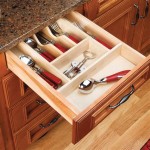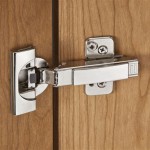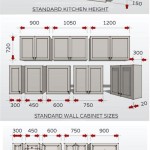```html
How to Arrange Food in Kitchen Cabinets: A Practical Guide
Organizing kitchen cabinets, specifically for food storage, is crucial for efficient meal preparation, reducing food waste, and maintaining a tidy and functional kitchen space. A well-organized pantry and food storage area allow for easy inventory management, preventing duplicate purchases and ensuring that food items are consumed before their expiration dates. This guide provides a comprehensive approach to arranging food within kitchen cabinets, focusing on practical methods, storage strategies, and maintenance tips.
Strategic Planning and Inventory
The first step in effectively arranging food in kitchen cabinets involves strategic planning and a thorough inventory. Before reorganizing, it is essential to assess the current contents of the cabinets to determine what needs to be discarded, consumed, or relocated. This process requires a systematic approach to ensure no items are overlooked.
Begin by completely emptying all kitchen cabinets designated for food storage. This allows for a clear assessment of available space and provides an opportunity to clean the shelves and surfaces. Use a damp cloth to wipe down the interior of the cabinets, removing any crumbs, spills, or dust. Consider using a mild cleaning solution for stubborn stains or residue. Allow the cabinets to dry completely before restocking.
As you remove items from the cabinets, categorize them into distinct groups. Common categories include canned goods, dry goods (such as pasta, rice, and flour), baking supplies (sugar, flour, extracts), snacks, spices, and breakfast items (cereal, oatmeal). Creating these categories facilitates the organization process and allows for logical placement within the cabinets.
For each item, check the expiration date. Discard any expired items immediately to prevent consumption of spoiled food and minimize clutter. For items nearing their expiration date, consider placing them in a designated “eat soon” section within the cabinets to prioritize their consumption. This practice significantly reduces food waste and ensures that products are used before they become unusable.
Assess the condition of each item’s packaging. Transfer dry goods from bulky or flimsy packaging into airtight containers. Airtight containers help to maintain the freshness of food products, prevent pest infestations, and create a more uniform and visually appealing storage system. Label each container clearly with the contents and the expiration date (if applicable). Consistent labeling ensures easy identification and prevents confusion when retrieving items.
Implementing Organizational Strategies
Once the inventory is complete and the cabinets are clean, the next step is to implement organizational strategies that maximize space and accessibility. Several techniques can be employed to optimize food storage within kitchen cabinets.
Consider the frequency of use when determining the placement of food items. Frequently used items, such as cereal, coffee, and commonly used spices, should be stored in easily accessible locations. These items should be placed at eye level or within easy reach to minimize the need for stretching or bending. Less frequently used items, such as baking supplies or specialty ingredients, can be stored on higher shelves or in the back of the cabinets.
Utilize vertical space effectively by using shelf dividers, risers, and organizers. Shelf dividers create separate compartments within the cabinets, preventing items from toppling over and maximizing space. Risers elevate items at the back of the shelf, allowing you to see and access items that would otherwise be hidden. Tiered organizers are particularly useful for storing canned goods or spices, allowing you to easily view and retrieve items without having to move multiple containers.
Employ clear, stackable containers for storing dry goods. Clear containers allow you to quickly identify the contents without having to open each container. Stackable containers maximize vertical space and create a more uniform and organized appearance. Choose containers that are airtight to maintain the freshness of food items and prevent pest infestations.
Designate specific areas within the cabinets for different categories of food. For example, dedicate one shelf to canned goods, another to dry goods, and another to baking supplies. Within each category, organize items alphabetically or by type. For example, arrange canned goods by vegetable, fruit, and soup. This categorization makes it easier to locate specific items quickly and efficiently.
Install pull-out shelves or drawers to improve accessibility to items stored at the back of the cabinets. Pull-out shelves allow you to easily view and retrieve items without having to reach and rummage through the entire cabinet. These are particularly useful for storing heavy items or items that are difficult to reach. Similarly, install door-mounted racks for storing spices, condiments, or small jars. Door racks maximize space and provide easy access to frequently used items.
Consider the weight distribution within the cabinets. Place heavier items on lower shelves to prevent instability and potential accidents. Lighter items can be stored on higher shelves. This distribution ensures that the cabinets are balanced and prevents the risk of shelves collapsing under excessive weight.
Maintaining Order and Preventing Food Waste
Maintaining the organization of kitchen cabinets requires ongoing effort and consistent habits. Regular maintenance is crucial for preventing clutter, minimizing food waste, and ensuring that the cabinets remain functional and organized.
Implement a regular cleaning schedule for the kitchen cabinets. At least once a month, take a few minutes to wipe down the shelves and surfaces, removing any crumbs or spills. This prevents the buildup of dirt and grime and helps to maintain a sanitary food storage environment. Check for expired items and discard them immediately. Rotate food items regularly, bringing older items to the front of the shelf and placing newer items at the back. This ensures that older items are consumed first, reducing the risk of spoilage.
Restock supplies strategically. Before heading to the grocery store, take inventory of the food items in the cabinets. This prevents duplicate purchases and ensures that you only buy what you need. Create a shopping list based on your inventory and stick to it while shopping. When restocking the cabinets, place new items at the back and move older items to the front. This rotation ensures that older items are used first. Immediately store newly purchased items in their designated locations within the cabinets. This prevents clutter from accumulating on countertops or in other areas of the kitchen.
Educate all household members about the organizational system and encourage them to follow it. This ensures that everyone is on the same page and contributes to maintaining order within the cabinets. Clearly label each shelf and container to facilitate understanding and compliance. Post a list of organizational guidelines on the inside of a cabinet door to serve as a reminder.
Monitor the effectiveness of the organizational system and make adjustments as needed. As your needs and preferences change, the organizational system may need to be adapted. Regularly assess the layout of the cabinets and identify areas for improvement. Consider rearranging items or adding new organizers to optimize space and accessibility. Solicit feedback from other household members to identify any challenges or areas for improvement.
Consider investing in additional storage solutions, such as a pantry or shelving unit, if the kitchen cabinets are consistently overcrowded. This provides additional space for storing food items and helps to alleviate the pressure on existing cabinets. Choose a storage solution that complements the existing kitchen décor and provides easy access to stored items. Ensure that the additional storage space is organized and maintained in the same manner as the kitchen cabinets.
By implementing these strategies, individuals can effectively arrange food in kitchen cabinets, creating a more organized, efficient, and functional kitchen space. This systematic approach not only reduces food waste but also simplifies meal preparation and enhances the overall kitchen experience.
```
How To Organize Kitchen Cabinets

Pin On Kitchen

Organizing Our New Kitchen S Cabinets Young House Love

Title Page The Mail

How To Organize A Pantry Best Organizers And Tips 2024
21 Ways To Organize Kitchen Cabinets Declutter

How To Organize Your Kitchen

How To Organize Your Kitchen Cabinets In 3 Simple Steps Practical Perfection

How To Organize Kitchen Cabinets

Simplify Your Life With Organized Kitchen Cabinets
Related Posts








